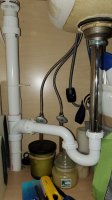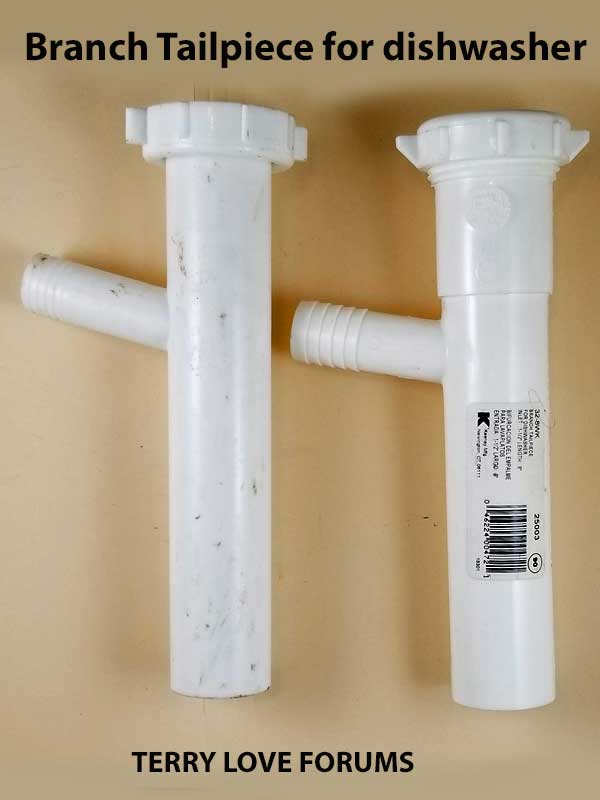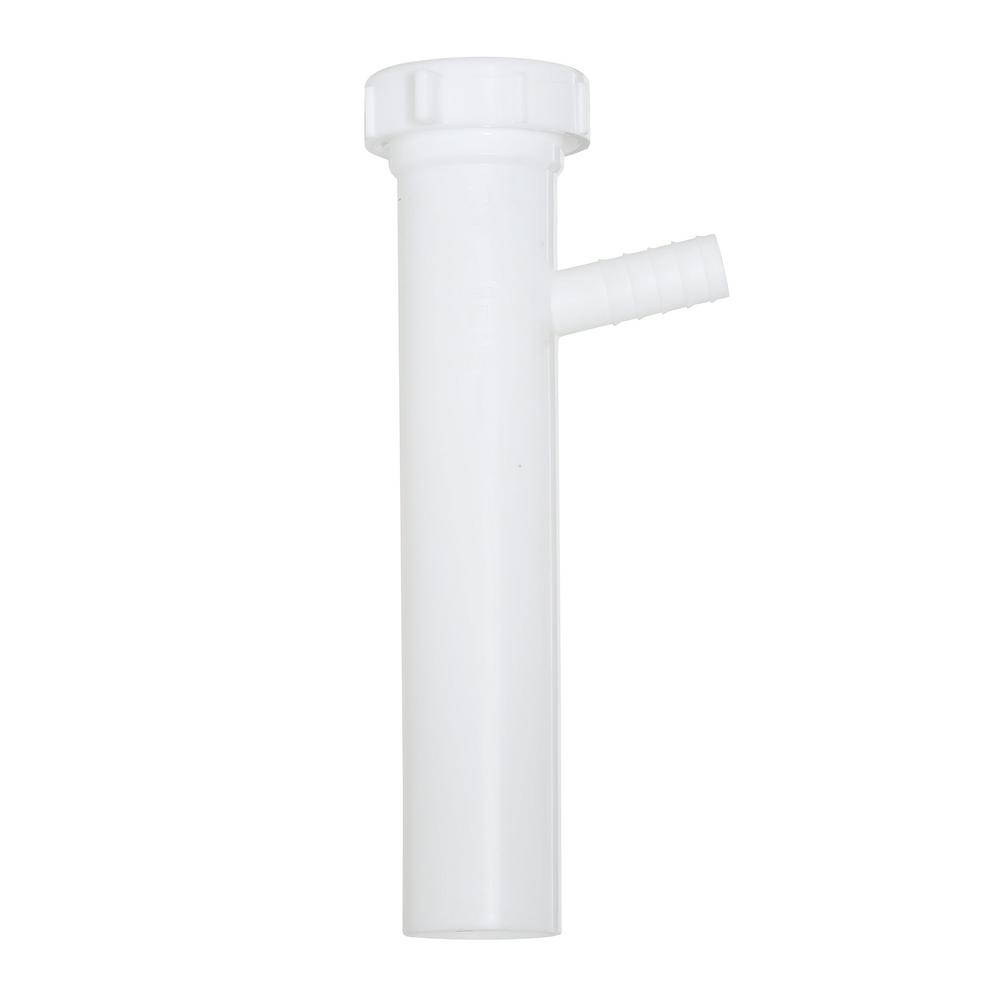steve-lion
New Member
Hello all - I'm replacing a 19 year old Ecowater water softener. The softener is in my basement and drains using 1/2" ID PVC that runs overhead about 45 feet before tapping into the main drain line at the point it exists the house to the septic system.
Most every replacement water softener I'm looking at does not recommend running drain lines this distance, without at least upgrading to 3/4" ID drain tubing. Unfortunately, replacing this drain line is no longer an option given that much of my basement is now finished.
My best option seems to be to run a 1/2" or perhaps even 5/8" ID drain line to a kitchen sink located above the softener. Total run would be about 17' and rise about 8'. The sink has a p-trap and vent per code. I'd looking for advice on how to tap into this and make sure I am still in compliance and have no problems. Please see attached image.
I'm thinking I would replace the chrome tailpiece with PVC DWV and tap into it with 45-degree wye and then a straight run out of that to a height about equivalent to the vent (see pic), connect a 45-degree sweep to get it totally vertical, and then finish it with a dual softener / R-O air gap connection. (I might also use this for an R-O drain).
Any issues or suggestions?
Most every replacement water softener I'm looking at does not recommend running drain lines this distance, without at least upgrading to 3/4" ID drain tubing. Unfortunately, replacing this drain line is no longer an option given that much of my basement is now finished.
My best option seems to be to run a 1/2" or perhaps even 5/8" ID drain line to a kitchen sink located above the softener. Total run would be about 17' and rise about 8'. The sink has a p-trap and vent per code. I'd looking for advice on how to tap into this and make sure I am still in compliance and have no problems. Please see attached image.
I'm thinking I would replace the chrome tailpiece with PVC DWV and tap into it with 45-degree wye and then a straight run out of that to a height about equivalent to the vent (see pic), connect a 45-degree sweep to get it totally vertical, and then finish it with a dual softener / R-O air gap connection. (I might also use this for an R-O drain).
Any issues or suggestions?



